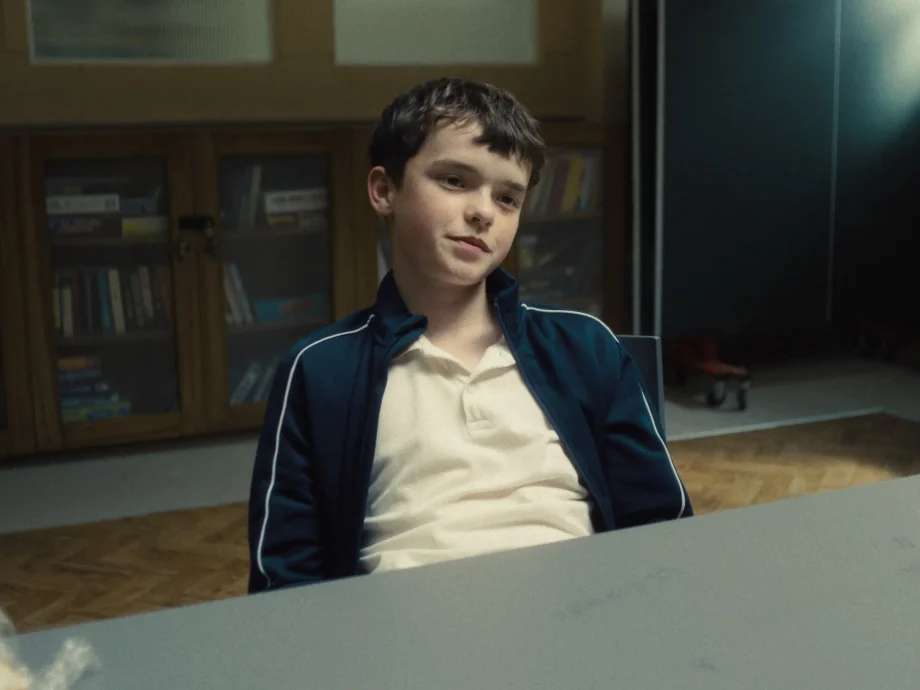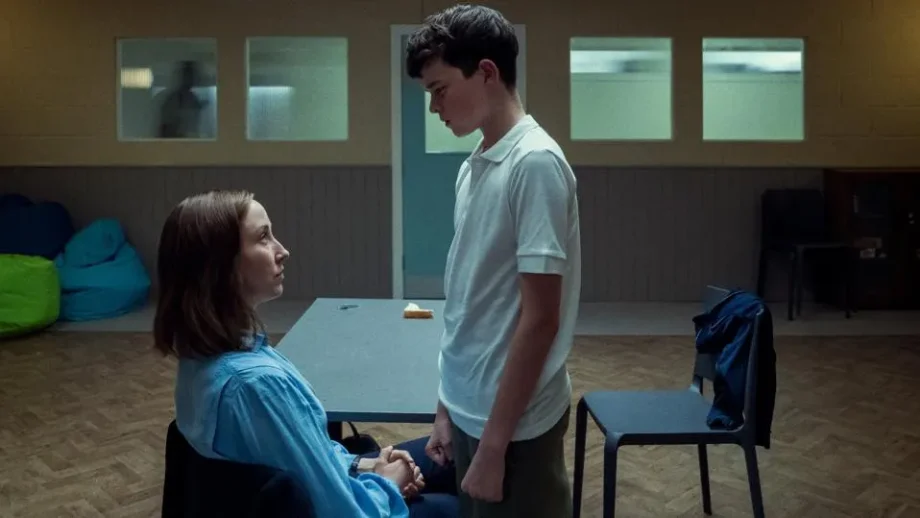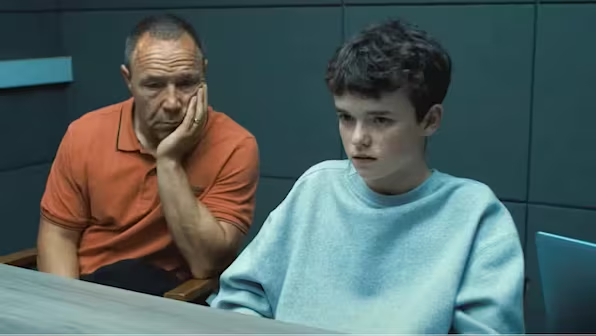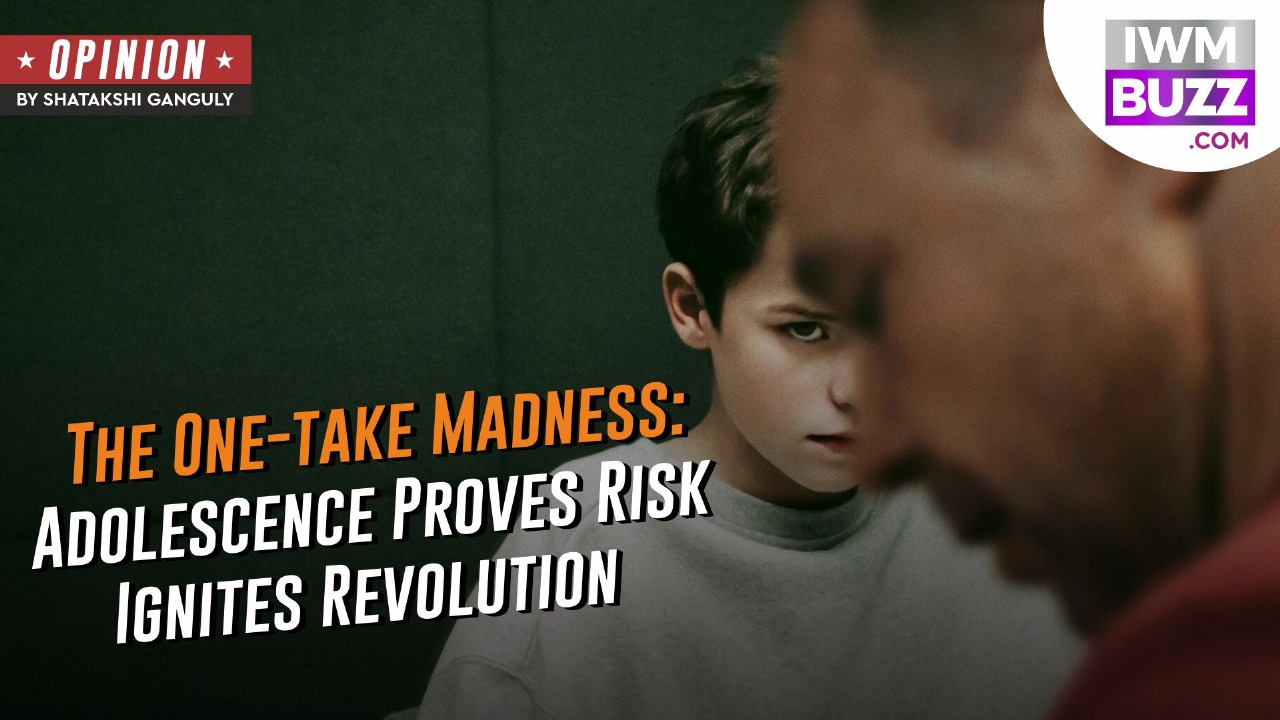As you make the breakthrough, you realise how our glances remain the silent witness. And the realisation lingers for the next four hours, with no blink. You almost feel you are in this eternity of raw emotions and human imperfections. So, you drown in this emotional, electric unpredictability. Everything feels so real-time, with no resets, no safety nets and no second chances.
Adolescence is a cinematic dare. It tosses revolution right on the table by picking up a risky single, uninterrupted take and questions the very norms of filmmaking that have been persistent over the years. So, what happens when you remove the safety net? You get the audience immersed within each frame that you craft. It becomes a story that doesn’t get lost in the jumps but actually follows.

Netflix‘s Adolescence has shaken the dull fundamentals. It’s a four-part mini-series that demands 4 hours of your time and makes you wonder about the challenges and risks one should take when promising to get ‘creative.’ Could you even presuppose the actors’ efforts to make it transition in one smooth take? Loads of rehearsals, training, and learning are what every instance of it prompts and leaves no room for hesitation. Reminds me of theatre plays. Speaking about the same, Jack Thorne mentioned that the one-shot format introduced a strict framework—much like a stage play—where time, setting, and events had to unfurl in one successive sequence. This limitation annihilated the usual freedom to jump between scenes or perspectives, inundating the audience with an untouched experience.

What inspired Adolescence?
A story like that is so accurate in its truth that it can happen to you or your family any day; therefore, relevance becomes organic. So, as it comes in a continuous flow, you feel its very presence. Adolescence draws from a wave of knife-related incidents in the UK, including the 2021 killing of a 12-year-old girl by a 14-year-old boy in Liverpool. Co-creators Stephen Graham and Jack Thorne crafted the series to confront male aggression head-on, delving into the dangerous influence of online incel culture and figures like Andrew Tate. The story focuses on a young boy arrested for murder, exploring the profound impact on his family and the tight-knit community around them.

It’s in the art of ‘preparation’
And what we learn from a film like this is that preparation turns out to be everything here. Each setting was intricately charted—not only to direct performers but also to facilitate smooth transitions without disrupting the visual flow. Filmmaker Philip Barantini shared how he and Matthew Lewis had to strategize far beyond conventional filmmaking methods. They even built miniature replicas—such as a scaled-down police station—to meticulously plan camera paths and assess spatial limitations.
The shooting schedule adhered to a disciplined three-week cycle. The initial week was devoted to refining performances with the actors, followed by a week of technical run-throughs involving the entire production team. The final phase saw filming commence, with two takes per day, aiming for a total of ten. However, unexpected challenges often led to as many as sixteen takes per episode. Curiously, it was almost always the final take that ended up in the finished version—a reflection of the relentless commitment to achieving cinematic fluidity.
And to be precise, the fluidity was personified. Adolescence proves that ‘taking risks’ is worth it. We often think the age-old term ‘audience isn’t ready,’ but we underestimate the audience. The audience is constantly evolving just like we are; it’s time that we get symbiotic in terms of acceptance and change.
And while we think that it’s ‘better to be safe than sorry,’ in terms of creativity, a series like this comes as a defiance.
Reigniting the flame—Why cinema needs to dare?
Cinema has always belonged to the ‘risk-takers’—the ones who refuse to play safe, push the limits of storytelling and dare to be different. But like Adolescence stunned audiences with its breathtaking one-take execution, several “Indian” films have broken free from conventions, choosing boldness over comfort.
A Wednesday (2008) featuring Naseeruddin Shah thrives on tight, no-frills cinematography that amplifies tension. The film’s pacing is lean—every second counts. The camera doesn’t waste time on elaborate frames; instead, it stays intimate, letting the actors’ expressions do the heavy lifting. The handheld camera work, the subtle shifts in lighting, and the relentless editing create a gripping atmosphere that never lets the tension break.
We had Ship of Theseus (2013). It was cerebral, complex, and unapologetically bold—an intellectual challenge for its viewers.
Court (2014) took realism to an extreme. Mrinal Desai’s cinematography used locked-off, wide-angle shots with no artificial lighting or dramatic close-ups, forcing the audience to observe scenes as outsiders, detached yet profoundly affected.
The Disciple (2020), shot by Michał Sobociński, used controlled, composed frames with minimal camera movement, mimicking the precision of Hindustani classical music itself. The stillness in the visuals reflected the protagonist’s rigid, disciplined life, making cinematography an extension of the film’s core philosophy.
Eeb Allay Ooo! (2019), Saumyananda Sahi captured Delhi’s streets in their raw, unfiltered form, using a mix of static long shots and shaky handheld movements to blur the lines between fiction and reality, immersing the audience in the protagonist’s chaotic world.
And if I talk about ‘mainstream Bollywood,’ I remember the song sequence from Main Hoon Naa, ‘Chale Jaise Hawaien,’ a one-take sequence.
Tumbbad (2018) is a classic of atmospheric cinematography, where Pankaj Kumar used natural lighting and a deep color palette of reds, browns, and greys to create a haunting, almost painterly aesthetic. Every frame felt like a gothic painting, drenched in rain and shadow, enhancing the film’s eerie folklore.
So, what’s the complaint about, then? We, too, have in the kitty…
Yes, the industry has been a shelter to classics and creativity, and if you look at the years, you will slowly understand how the world has forgotten to take risks. Cinema has now become so comfortable, not just in Bollywood, but in Hollywood too, that cinema is practically snoring. And with Adolescence, we are taking the chance to reignite the ‘flame’ we also had in ourselves, the above films (there are countless others) are just a reminder to the ‘let go’ potential. This one-take wonder slaps us awake.
It’s a reminder that we’ve been settling for too long, leaning on the tried-and-tested, when we should be out there experimenting, breaking, creating. Sure, not every film needs to be a one-take marvel, but Adolescence shows us that when we dare to throw out the safety net, we don’t just get something new—we get something that resonates and challenges the status quo. So, here’s to less playing it safe and more plunging headfirst into the unknown. Because if cinema isn’t willing to take risks, what exactly are we watching? As Jean-Luc Godard says, “Good films get smaller audiences, but more of the viewer.”

